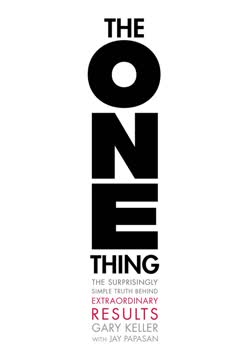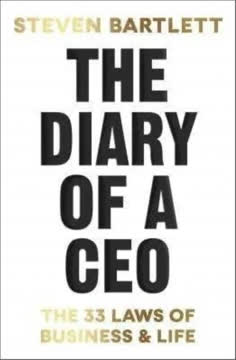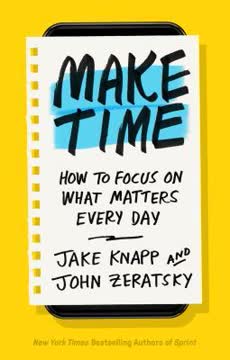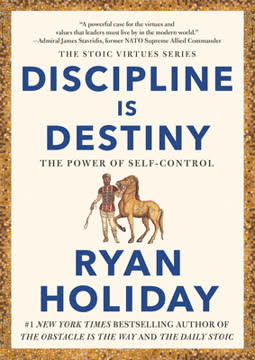가지 주요 요점
1. 주의력을 의도적으로 관리하여 생산성과 창의성 증진
주의력은 좋은, 생산적인 삶을 사는 데 가장 강력한 도구입니다.
주의력은 유한합니다. 우리의 뇌는 매초마다 받는 1,100만 비트의 정보 중 약 40비트만 처리할 수 있습니다. 이 제한된 주의 공간은 생산성과 창의성 모두에 중요합니다. 주의력을 의도적으로 관리함으로써 중요한 작업에 더 깊이 집중할 수 있고, 우리의 마음이 생산적으로 방황할 수 있게 합니다.
의도적인 주의력 관리는 다음을 이끌어냅니다:
- 생산성 증가
- 창의성 향상
- 더 명확한 사고
- 일과 삶에 대한 더 큰 몰입
- 더 의미 있는 경험
- 스트레스와 압박감 감소
주의력 관리를 개선하려면:
- 작업에 대한 명확한 의도를 설정하세요
- 방해 요소를 사전에 제거하세요
- 메타 인식 연습 (주의가 어디에 있는지 알아차리기)
- 깊은 집중과 의도적인 마음 방황 기간을 번갈아 가며 가지세요
2. 하이퍼포커스: 한 번에 하나의 중요한 작업에 집중하기
작업에 하이퍼포커스할 때, 하나의 작업, 프로젝트 또는 다른 주의 대상이 주의 공간을 완전히 채웁니다.
하이퍼포커스는 생산성을 높입니다. 중요한 작업에 집중함으로써 더 짧은 시간에 더 많은 것을 성취할 수 있습니다. 이 깊은 집중 상태는 특히 복잡하거나 창의적인 작업에서 더 효율적이고 효과적으로 일할 수 있게 합니다.
하이퍼포커스에 들어가려면:
- 중요한 작업 하나를 선택하세요
- 방해 요소를 제거하세요
- 선택한 작업에 완전히 집중하세요
- 주의가 흐트러질 때마다 계속해서 주의를 되돌리세요
하이퍼포커스의 이점:
- 작업 품질 향상
- 작업 완료 속도 증가
- 더 깊은 학습과 이해
- 문제 해결 능력 향상
- 더 큰 성취감
3. 방해 요소를 제어하여 집중력과 생산성 향상
방해 요소는 유혹이 되기 전에 다루는 것이 훨씬 쉽습니다.
방해 요소의 사전 관리. 우리의 뇌는 새로움을 추구하도록 설계되어 있어 방해 요소가 특히 유혹적입니다. 방해 요소가 발생하기 전에 제거함으로써 더 쉽게, 더 오랜 시간 동안 집중을 유지할 수 있습니다.
방해 요소를 제어하는 전략:
- 방해 요소 없는 모드 만들기 (예: 웹사이트 차단, 알림 음소거)
- 휴대폰을 시야에서 벗어나거나 다른 방에 두기
- 소음 차단 헤드폰 사용
- 이메일과 소셜 미디어 확인 시간을 특정 시간으로 설정
- 물리적 및 디지털 환경 단순화
기억하세요: 방해 요소를 저항할 때마다, 당신의 뇌는 더 나은 집중력을 훈련하고 있습니다.
4. 스캐터포커스: 창의성을 위해 의도적으로 마음을 방황시키기
스캐터포커스는 뇌의 가장 창의적인 모드입니다.
의도적인 마음 방황. 하이퍼포커스가 생산성에 중요하다면, 스캐터포커스는 창의성, 문제 해결, 미래 계획에 필수적입니다. 마음을 의도적으로 방황하게 함으로써 새로운 연결과 통찰이 나타날 공간을 만듭니다.
세 가지 유형의 스캐터포커스:
- 캡처 모드: 생각을 자유롭게 흐르게 하고 기록하기
- 문제 해결 모드: 문제를 느슨하게 마음에 두고 생각을 방황하게 하기
- 습관적 모드: 단순한 작업을 하면서 마음을 방황하게 하기
스캐터포커스의 이점:
- 창의성과 문제 해결 능력 향상
- 더 나은 미래 계획
- 자기 인식 증가
- 감정 처리 개선
- 정신 에너지 재충전
5. 중요한 작업에 집중하기 위한 강력한 의도 설정
의도는 항상 주의력에 앞서야 합니다—사실, 두 개념은 완벽하게 짝을 이룹니다.
의도적인 작업 선택. 성취하고자 하는 명확한 의도를 설정함으로써, 바쁜 일이나 방해 요소에 빠지지 않고 중요한 작업에 집중할 가능성이 높아집니다.
강력한 의도를 설정하는 기술:
- 3의 법칙 사용: 매일 세 가지 주요 작업을 선택하세요
- 가장 중요한 작업 식별
- 실행 의도 만들기 (구체적인 언제-그때 계획)
- 에너지가 최고조인 시간에 중요한 작업을 일정에 넣기
강력한 의도의 이점:
- 의미 있는 작업에 대한 생산성 증가
- 미루기 감소
- 목적과 성취감 증가
- 일상 행동과 장기 목표 간의 더 나은 정렬
6. 마음챙김과 명상을 통해 주의 공간 확장
명상은 간단합니다—눈을 감고 앉아 호흡에 주의를 기울이세요.
정신 능력 향상. 정기적인 마음챙김과 명상 연습은 작업 기억 용량을 증가시켜 동시에 더 많은 정보를 보유하고 처리할 수 있게 합니다. 이 확장된 주의 공간은 집중력과 창의성을 모두 향상시킵니다.
확장된 주의 공간의 이점:
- 복잡한 작업에 집중하는 능력 향상
- 창의성과 문제 해결 능력 향상
- 집중 작업 중 마음 방황 감소
- 메타 인식 증가 (생각을 알아차리기)
- 감정 조절 능력 향상
매일 몇 분간 호흡에 집중하는 명상으로 시작하세요. 연습을 계속하면 집중을 유지하고 마음이 방황할 때 알아차리기 쉬워질 것입니다.
7. 전략적인 휴식으로 주의력 재충전
정신 에너지를 재충전하기 위해 스캐터포커스를 자주 사용할수록, 가장 중요한 작업에 더 많은 에너지를 가질 수 있습니다.
의도적인 휴식. 정기적인 휴식을 취하는 것은 하루 종일 높은 수준의 집중력과 생산성을 유지하는 데 필수적입니다. 전략적인 휴식은 마음을 재충전시키고 창의성을 불러일으킬 수 있습니다.
효과적인 휴식을 위한 지침:
- 최소 90분마다 휴식을 취하세요
- 한 시간 작업당 약 15분의 휴식 시간을 목표로 하세요
- 저노력적이고 즐거운 활동을 선택하세요
- 휴식 중에는 일 관련 생각에서 벗어나세요
효과적인 휴식 활동:
- 특히 자연 속에서 산책하기
- 음악 듣기
- 명상하기
- 창의적인 취미에 참여하기
- 의미 있는 대화 나누기
기억하세요: 바쁠수록 정기적인 휴식을 취하는 것이 더 중요합니다.
8. 가치 있는 "점" 정보 수집 및 연결
우리는 우리가 소비하는 것입니다.
의도적인 정보 소비. 당신이 받아들이는 정보의 질은 창의적인 연결을 만들고 문제를 해결하는 능력에 직접적인 영향을 미칩니다. 가치 있는 "점" 정보를 의도적으로 찾음으로써, 미래에 사용할 정신 도서관을 향상시킬 수 있습니다.
소비할 정보의 유형:
- 유용한: 실행 가능하고, 목표에 관련 있으며, 장기적인 가치가 있는 정보
- 균형 잡힌: 유용하고 재미있는 정보 (예: 잘 쓰여진 논픽션)
- 재미있는: 재미있지만 덜 실용적인 정보 (적게 사용)
가치 있는 점을 수집하는 전략:
- 특히 자신의 분야 외의 책을 널리 읽기
- 의미 있는 대화에 참여하기
- 강의나 워크숍에 참석하기
- 다양한 경험과 관점을 접하기
기억하세요: 당신의 창의성은 당신이 수집한 정보에 의해 제한됩니다. 정신 도서관을 확장하여 창의적 잠재력을 향상시키세요.
9. 최적의 성과를 위해 에너지 수준에 맞춰 일하기
에너지가 풍부한 순간을 가장 복잡하고 의미 있는 작업에 할애할 때 가장 생산적입니다.
에너지 정렬 생산성. 우리의 에너지 수준은 하루 종일 변동하며, 이는 집중력과 창의성에 영향을 미칩니다. 자연스러운 에너지 리듬에 작업을 맞춤으로써 생산성과 창의성을 최적화할 수 있습니다.
에너지 정렬 작업을 위한 전략:
- 집중 작업을 위한 생물학적 최적 시간 (BPT) 식별
- BPT 동안 복잡하고 고우선순위 작업 일정에 넣기
- 낮은 에너지 기간 동안 창의적인 작업 사용 (창의적 최적 시간)
- 에너지가 떨어질 때 휴식 취하기
기억하세요: 자연스러운 에너지 리듬에 맞춰 일하면 더 적은 노력과 스트레스로 더 많은 것을 성취할 수 있습니다.
10. 행복에 투자하여 집중력과 창의성 향상
행복은 우리의 주의 공간 위에 놓는 장미색 렌즈로, 경험을 더 생산적이고 창의적인 방식으로 관계 맺게 합니다.
긍정적 생산성. 긍정적인 기분은 주의 공간을 확장하여 깊이 집중하고 창의적으로 생각하기 쉽게 만듭니다. 행복을 의도적으로 키움으로써 생산성과 전반적인 웰빙을 향상시킬 수 있습니다.
행복을 증진시키는 과학적 전략:
- 감사 연습 (예: 매일 감사한 세 가지를 목록으로 작성)
- 규칙적인 신체 운동에 참여하기
- 의미 있는 관계에 시간 투자하기
- 명상하거나 마음챙김 연습하기
- 무작위 친절 행위 수행하기
행복이 생산성과 창의성에 미치는 이점:
- 확장된 주의 공간
- 도전을 극복하는 능력 향상
- 문제 해결 능력 향상
- 기억 회상 능력 향상
- 역경에 대한 회복력 증가
기억하세요: 행복에 투자하는 것은 단지 웰빙에 좋은 것만이 아니라, 강력한 생산성 도구이기도 합니다.
마지막 업데이트 날짜:
FAQ
What's Hyperfocus: How to Manage Your Attention in a World of Distraction about?
- Focus on Attention Management: The book by Chris Bailey explores managing attention amidst distractions, emphasizing that productivity is more about attention management than time management.
- Two Modes of Focus: It introduces hyperfocus for intense concentration and scatterfocus for creative thinking, both essential for productivity and creativity.
- Practical Strategies: Bailey offers actionable strategies to cultivate hyperfocus and minimize distractions, aiding in accomplishing meaningful work.
Why should I read Hyperfocus by Chris Bailey?
- Combat Distraction: The book provides practical solutions to regain control over your attention, crucial in today's distraction-filled world.
- Research-Based Insights: Grounded in scientific research, it combines theory with practical advice, making it a credible resource for improving focus.
- Enhance Productivity: Effective attention management can significantly boost productivity and satisfaction in both work and personal life.
What are the key takeaways of Hyperfocus?
- Attention is Limited: Our attention is finite, capable of focusing on about 40 bits of information at once, highlighting the need for effective focus management.
- Intentional Focus: Setting clear intentions, like using the Rule of 3, helps prioritize tasks and direct attention to what truly matters.
- Tame Distractions: Strategies for a distraction-free environment, such as using apps and managing notifications, are crucial for maintaining focus.
What is hyperfocus, according to Hyperfocus?
- Deep Concentration: Hyperfocus is intense concentration on a single task, filling your attentional space and enhancing productivity and creativity.
- Deliberate Attention Management: Achieving hyperfocus involves choosing important tasks, eliminating distractions, and maintaining focus for a fulfilling work experience.
- Benefits of Hyperfocus: It allows accomplishing more in less time, increases work satisfaction, and reduces stress compared to multitasking.
How can I practice hyperfocus as suggested in Hyperfocus?
- Set Clear Intentions: Choose a specific, meaningful task to focus on, setting the stage for hyperfocus and effective attention direction.
- Eliminate Distractions: Create a distraction-free environment by turning off notifications and using distraction-blocking apps to minimize interruptions.
- Use Timers: Work on tasks for predetermined periods without interruption, creating urgency and encouraging sustained focus.
What is scatterfocus, and how does it relate to hyperfocus in Hyperfocus?
- Creative Thinking Mode: Scatterfocus involves letting your mind wander, essential for creativity and problem-solving.
- Balance Between Modes: Both hyperfocus and scatterfocus are necessary for optimal productivity, with hyperfocus for deep work and scatterfocus for innovation.
- Encouraging Mind Wandering: Engaging in scatterfocus can lead to breakthroughs, allowing the brain to process information less structuredly.
How can I incorporate scatterfocus into my routine as per Hyperfocus?
- Engage in Habitual Tasks: Perform simple tasks like walking or cleaning, allowing your mind to wander and create mental space for scatterfocus.
- Schedule Mind-Wandering Time: Set aside time for mind-wandering, letting thoughts flow without specific goals to foster creativity.
- Capture Ideas: Keep a notepad handy to jot down insights during scatterfocus sessions, retaining valuable thoughts that emerge.
What are some practical strategies from Hyperfocus to minimize distractions?
- Distraction Lists: Jot down thoughts or tasks that arise while focusing, acknowledging distractions without derailing attention.
- Mind Your Environment: Modify your workspace to reduce distractions, like keeping your phone away or using noise-canceling headphones.
- Set Boundaries: Establish specific times for checking emails and messages, maintaining focus on primary tasks.
What are the four types of tasks discussed in Hyperfocus?
- Necessary Work: Productive but unattractive tasks like meetings, requiring effort to engage with.
- Purposeful Work: Productive and attractive tasks like writing or mentoring, providing satisfaction and impact.
- Unnecessary Work: Neither productive nor attractive tasks, often serving as procrastination.
- Distracting Work: Attractive but unproductive tasks like social media, consuming time without meaningful results.
What are some effective methods to improve my attention as suggested in Hyperfocus?
- Meditation: Enhances working memory and attention span, training the brain to focus on a single object.
- Mindfulness: Increases awareness of thoughts and surroundings, reducing mind-wandering and improving task focus.
- Regular Reflection: Assess what occupies your attentional space, adjusting focus to maintain clarity and intention.
What are the best quotes from Hyperfocus and what do they mean?
- "Attention is your most valuable asset.": Emphasizes managing attention effectively, impacting productivity and life quality.
- "We are what we pay attention to.": Highlights that experiences and outcomes are shaped by focus, leading to a fulfilling life.
- "Your focus determines your reality.": Suggests that directing attention shapes perceptions and experiences, creating a satisfying reality.
How does Hyperfocus suggest managing distractions?
- Identify Common Distractions: Recognize and minimize common distractions, using apps or setting specific times for emails.
- Create a Focus Ritual: Establish routines or environments signaling the brain to concentrate, preparing for deep work.
- Practice Mindfulness: Increases awareness of distractions, allowing effective redirection of attention back to tasks.
리뷰
독자들은 일반적으로 하이퍼포커스가 주의력 관리와 생산성 향상에 대한 실용적인 조언을 제공한다고 칭찬합니다. 많은 이들이 하이퍼포커스와 스캐터포커스의 개념을 계몽적으로 여기며, 집중된 작업과 창의적인 마음 방황 사이의 균형을 높이 평가합니다. 일부 비평가들은 이 책이 흔한 생산성 조언을 반복한다고 느끼지만, 대부분의 독자들은 베일리의 과학 기반 접근 방식과 쉽게 실행할 수 있는 전략에 가치를 둡니다. 저자가 직접 낭독한 오디오북도 좋은 반응을 얻고 있습니다.
Similar Books
















